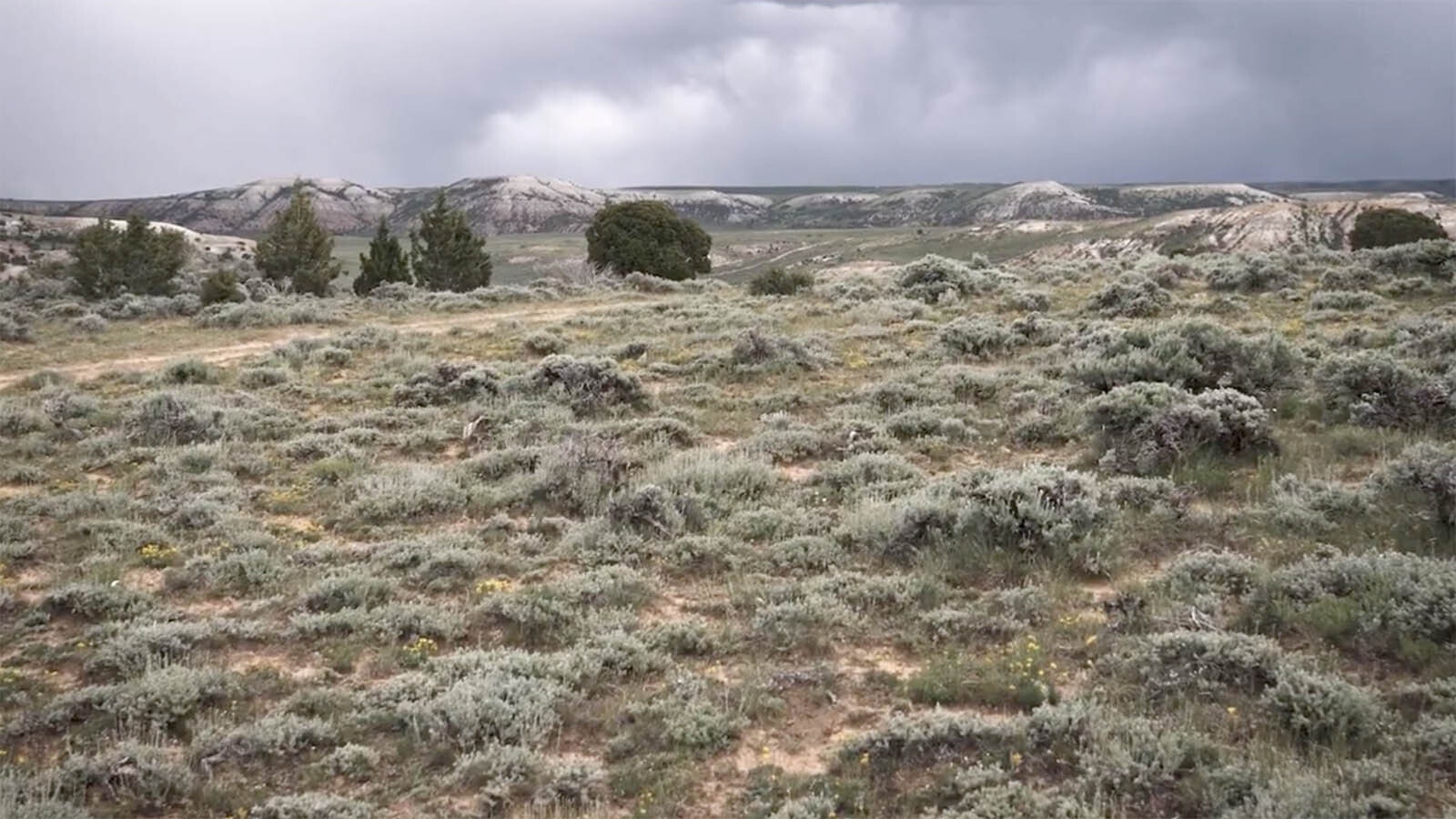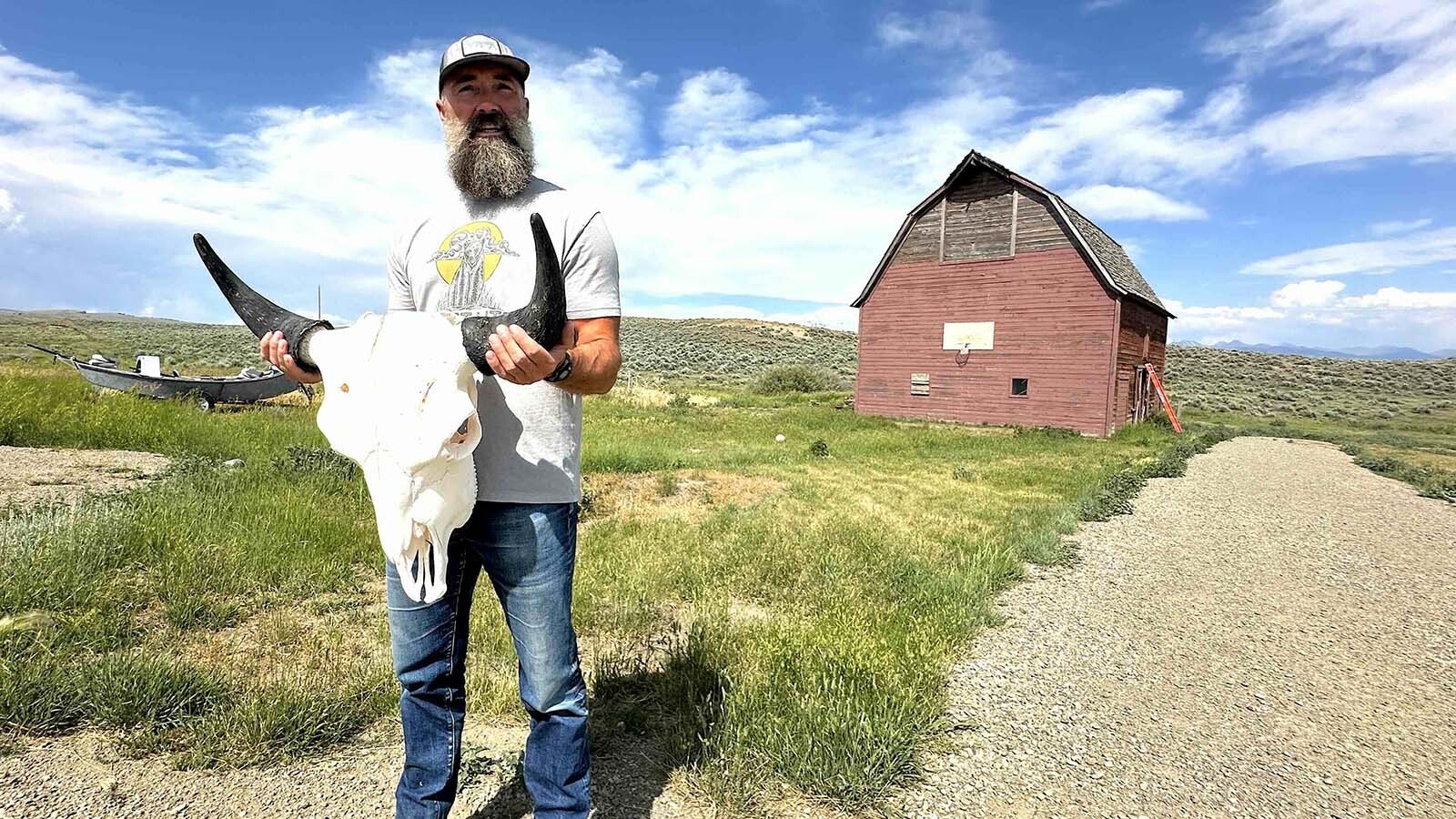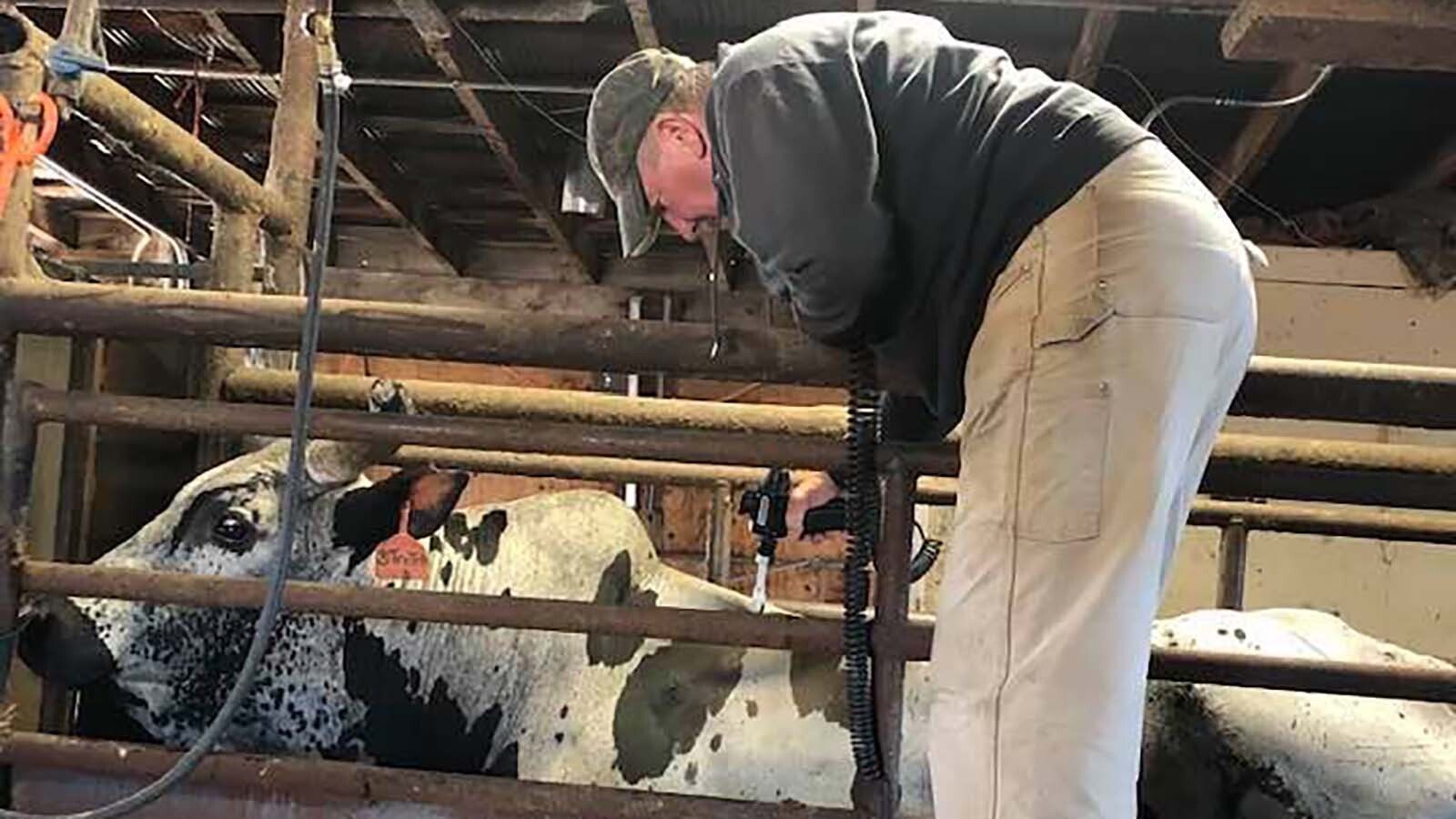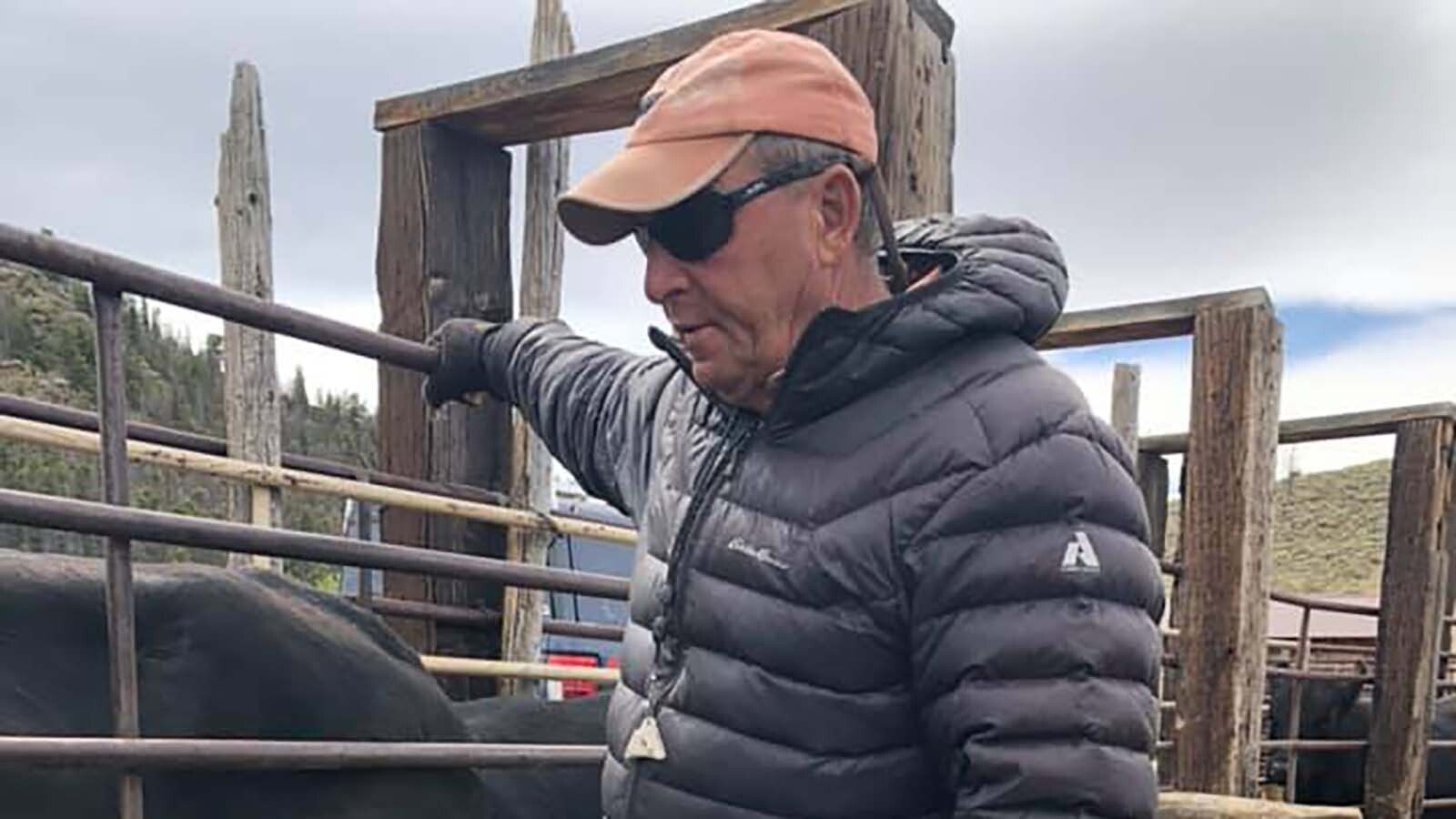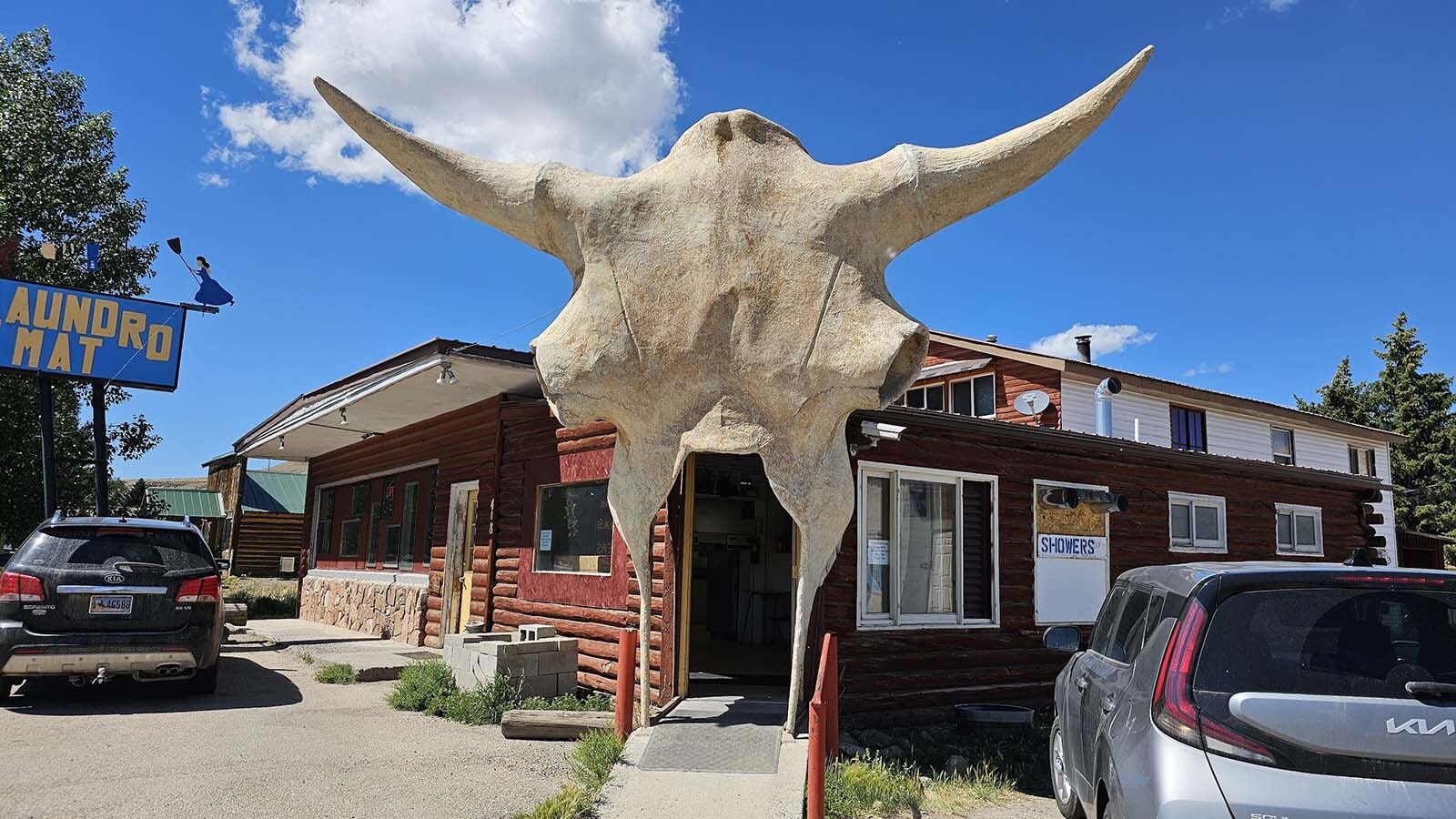After about a century of managing the Muddy Ridge area in northern Fremont County, a federal agency is ready to give it to someone else.
The Bureau of Reclamation is revoking its management of roughly 60,000 acres in the Muddy Ridge area north of Riverton, Wyoming.
Reclamation’s fellow federal agency the Bureau of Land Management is considering taking on the acreage and maintaining it as public lands. If BLM does not want to do that, the region could go next to other entities, starting with the Bureau of Indian Affairs on behalf of the Northern Arapaho and Eastern Shoshone Tribes.
Several ranchers are watching the process with concern, as 45 grazing leases may hang in the balance.
Midvale Irrigation District
Reclamation was supposed to turn the area into irrigated farmland, years after the U.S. government bought the area and what is now Riverton from the Eastern Shoshone and Northern Arapaho tribes in 1905, Lyle Myler, manager of the Wyoming Bureau of Reclamation Office, told Cowboy State Daily.
While the region is part of the state’s largest irrigation district, it didn’t become one big farm.
Midvale Irrigation Board President Rich Pingetzer described it as a grazing region with some hunting, fishing and recreation.
Myler called it “not fully developed like maybe had been originally conceptualized,” adding, “we have several situations where Reclamation had conceptualized big projects that didn’t get fully developed but were still very successful.”
So far, the Bureau of Reclamation has reviewed the lands it wants to revoke, updated legal descriptions of those and made a list of “contaminant,” illegal dump areas there. And the agency gave that information to the BLM, said Myler.
But Will BLM Want It?
The question remains whether the BLM wants to manage Muddy Ridge.
“We understand there’s some buzz from the topic of course,” Mickey Fisher, lead public affairs specialist for BLM Wyoming, told Cowboy State Daily, adding, “It’s very early in the process.”
The exact acreage proposed for withdrawal from Reclamation’s slate of projects is 56,296 acres in the zone west of the Boysen Reservoir, and that only concerns the surface estate.
The two Wyoming tribes have had control over the mineral estate since 1958, Fisher said.
He said BLM is expecting to receive Reclamation’s report soon, after which BLM will conduct a suitability study to see if those lands should stay public. Besides doing its own suitability study, BLM also will publish the proposed action and seek public comment for weeks before making any final moves.
Normally, BLM wouldn’t speak publicly about acquisition projects in such a prenatal stage, Fisher said.
But concerned people have been contacting both BLM and Reclamation, the two spokesmen said. Some have also been contacting Wyoming’s U.S. Rep. Harriet Hageman and their local state legislators.
“We do understand there’s some rumblings from the public on it, and we want to make sure we’re being proactive and communicating on it at this point,” said Fisher.
In Case Of Rejection
If BLM doesn’t want to manage Muddy Ridge, other entities can try to get through the U.S. General Services Administration, which would list the land on its website map and coordinate the land transfer, a GSA spokesperson told Cowboy State Daily in a Monday email.
The spokesperson said GSA also gives “targeted interests” to entities that fit the region, such as “when a property’s location can focus attention to supportive agencies such as the Bureau of Indian Affairs (BIA), when the property is on or near and Indian Reservation.”
Meaning, there is the potential the United States government could place the land into trust for the Northern Arapaho and Eastern Shoshone Tribes.
The tribes have asked for Muddy Ridge to be restored to their lands, a source who could not speak publicly for attribution told Cowboy State Daily.
Both tribes argued in a 2014 federal court case, Wyoming vs. EPA, that Riverton and other areas north of the Wind River are lawfully still part of the Wind River Indian Reservation. The Northern Arapaho and Eastern Shoshone Tribes intervened in the case, saying the state was trying to ignore tribal treaty rights and history, and that multiple historical moves classified the region as reservation.
The historical events to which the tribes pointed in that case may also be relevant with respect to Muddy Ridge. For example, the government re-joined unused lands to the reservation following the 1934 Indian Reorganization Act.
"Shortly after the (Indian Reorganization Act's) enactment, the Commissioner of Indian Affairs specifically recognized the (Wind River) as one of the reservations where Congress had intended lands to be restored to full tribal ownership," reads the Northern Arapaho Tribe's intervenor brief from that case. The brief adds that the commissioner distinguished reservations like the Wind River from others whose size reduction was unequivocal.
But the 10th Circuit ultimately ruled that those areas are not reservation, saying Congress separated them with the 1905 Act.
Neither the Northern Arapaho nor Eastern Shoshone Business Councils responded to requests for comment by publication time.
Grazing Leases Can Die
Some Muddy Ridge ranchers are afraid they will not be able to keep their grazing permits, or that they may have to compete with buffalo if the tribes become land trustees of Muddy Ridge, Pingetzer told Cowboy State Daily. Besides being hungry, buffalo can come with other problems like tough management and disease, he added.
But at this point, ranchers can only speculate on whether the tribes would receive Muddy Ridge and on what they’d do with the area if they did.
“There’s nothing saying it’s going to the tribes — that’s just an option that we personally don’t want. But there’s nothing saying that’s going to happen now,” he said.
The ranchers’ concerns about losing their grazing permits in the event of a land transfer are legitimate:
Most of the acreage is under grazing agreements managed by Midvale Irrigation District. And the terms of agreement between Reclamation and Midvale include a provision that if the lands leave Reclamation’s control, the grazing agreement between Midvale and Reclamation “can be terminated,” Myler said.
“And what the fate of grazing out there would be in the future if those lands leave Reclamation surface responsibility, I’m not sure what the fate would be of those lands,” he said
The next landholder can recognize the leases and continue them, or let them die, Myler added.
Actually, Ranchers Versus Feds
One non-tribal rancher, who has worked arm-in-arm with tribal ranchers on feral horse roundups and public issues, believes the land transfer is not a tribal-versus-nontribal issue, but an issue in which all ranchers, regardless of tribal affiliation, should be worried about the federal government’s recent stance on grazing.
“(This is) a very viable threat to Fremont County’s way of life, our culture, our history, our economics,” Mitch Benson, non-tribal rancher and farmer, told the Fremont County Commission at its April 9 meeting. “We as a community are going to have to address this in cooperation with the tribes.”
The commissioners present agreed with Benson. The commission has applied for cooperative agency status to be involved in each step of the Muddy Ridge transfer.
In a follow-up interview, Benson showed Cowboy State Daily two identical letters sent last year to two different tribal ranchers on the Wind River Indian Reservation, in which the Wind River BIA office told the ranchers they’d soon have to cut back on grazing because of the wild horse impacts through the region.
That grazing cutback did not happen in 2023.
The Intertribal Council (a government representing both tribes) asked for more analysis and more time to conduct its horse management efforts, said a source close to the issue. Cowboy State Daily could not obtain the intertribal order by publication time to confirm its existence.
About 2,000 horses were removed from the reservation in early 2023, in a state- and federally-funded effort Gov. Mark Gordon’s representative called a “wild success” at a legislative meeting last October.
Tribal and federal spokespeople discussed the threat of horses toward wildlife. Elk and mule deer returned to central portions of the reservation “overnight” after the roundup, Art Lawson, Tribal Fish and Game director, told the state’s Select Committee on Federal Natural Resource Management at that meeting.
‘Looking At Extinction’
If the BIA imposes that proposed, restricted grazing strategy on Muddy Ridge (should it manage Muddy Ridge on the tribes’ behalf), area farmers and ranchers could lose their livelihoods, Benson told Cowboy State Daily.
“All of us farmers and ranchers on the tribal side and the non-tribal side, we’re really looking at extinction if this stuff goes through,” he said.
Benson pointed to other federal harbingers that have threatened the industry, such as proposed amendments to the Federal Lands Policy Management Act (FLPMA) that would create a federal non-use permitting class for conservation alone – and the federal government’s attempt (abandoned at the last minute) to pitch public lands on the New York Stock Exchange.
“Everything (proposed for the land) has to do with limiting access to federal lands to fight, really, climate change,” said Benson.
But the loss of cattle in Fremont County would hurt the entire county’s economy, not just the ranchers, he said.
Just A Little History
The U.S. government bought huge portions of the Wind River Indian Reservation with the 1905 Act. One year later, Riverton became a town. Over the following years, the federal government opened up the area for homesteaders and gave various portions to federal entities for projects and management.
“The main withdrawal” was in 1918, said Myler.
The Bureau of Reclamation tried to get Muddy Ridge off its hands in the early-to-mid-1990s as well, but Wyoming Congressional delegates used their influence to put a stop to it.
Fremont County Commission Vice-Chair Mike Jones said Congress could put a stop to it now, if it wishes.
“The outlier here is Congress,” Jones told his fellow commissioners during their April 9 meeting, adding that commissioners have been reaching out to the Wyoming federal delegates.
Clair McFarland can be reached at clair@cowboystatedaily.com.

